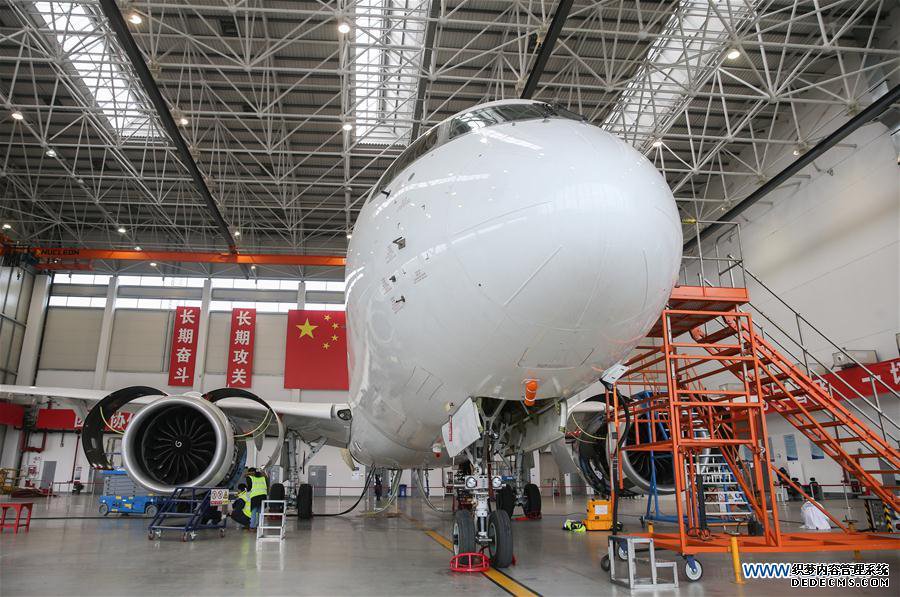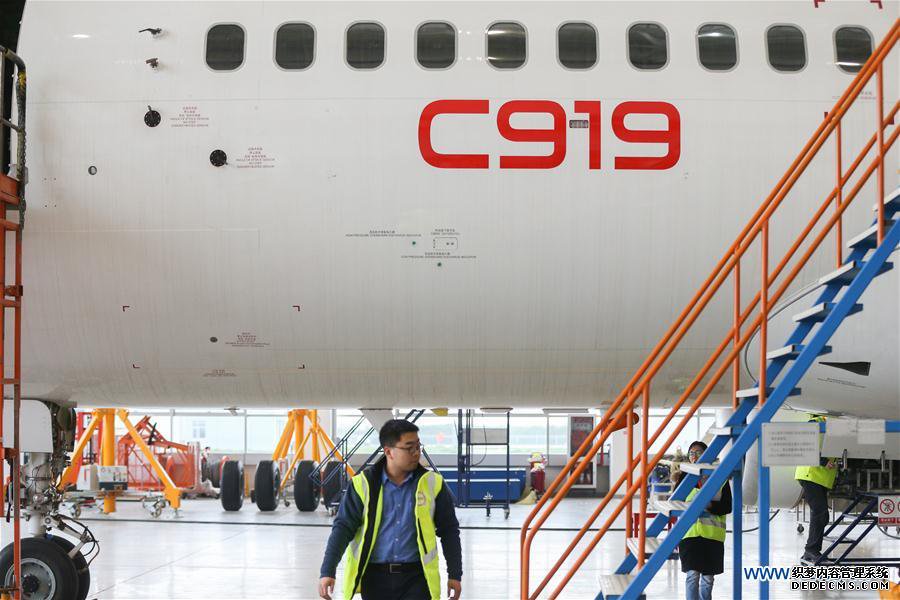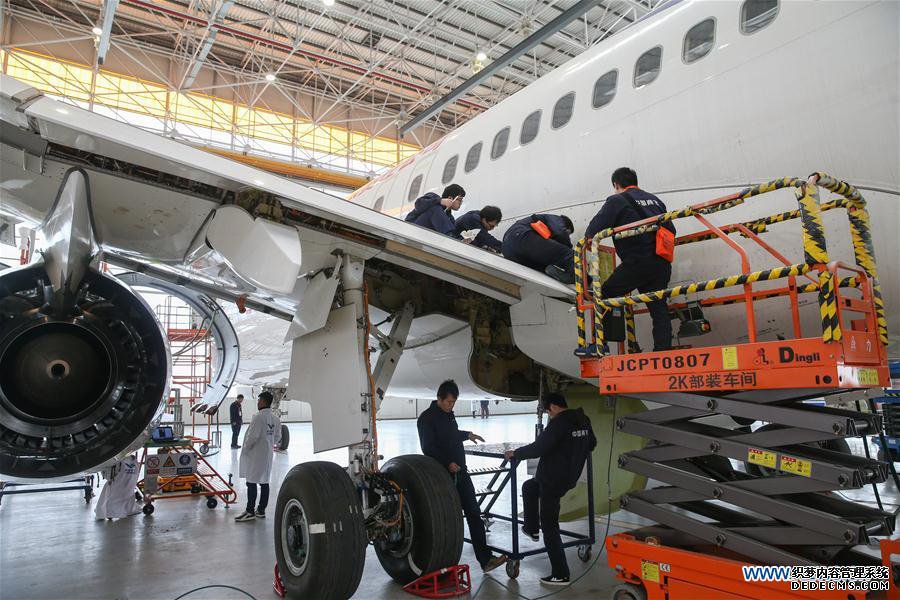相关链接>>
Shanghai-based State-owned Commercial Aircraft Corp of China Ltd, the C919's manufacturer, said after the plane completes all the high-speed taxiing tests, the company will choose a date to conduct its first flight.
C919 may make maiden flight soonThe C919 is a commercial aircraft for medium-haul flights with 168 seats and twin engine jet. The homemade plane is expected to compete with the updated Airbus 320 and the new-generation B737, which currently dominate the market.
China's self-developed C919 aircraft given first high-speed taxi test China's C919 to take maiden flight, trillion-dollar industry clusters will take shapePhoto taken on April 11, 2017 shows C919, the first large passenger aircraft designed and built by China, in a hangar of Shanghai-based Commercial Aircraft Corp. of China (COMAC) in Shanghai, east China. [Ding Ting / Xinhua]
Twenty-five experts who come from Chinese Academy of Sciences, Chinese Academy of Engineering, the Civil Aviation Administration of China and COMAC, discussed and reviewed how preparations were going with the C919.

Wang Yanan, editor-in-chief of Aerospace Knowledge magazine, said high-speed taxiing tests are usually conducted at speeds of 230 to 260 km per hour, with the front landing gear slightly lifted to simulate takeoff. The anticipated C919, the large homegrown passenger jet, passed its last flying review on April 18 before its maiden flight. Meanwhile, it completed the second high-speed taxiing test, which was conducted only two days after the first high-speed taxiing test. Staff members work by C919, the first large passenger aircraft designed and built by China, in a hangar of Shanghai-based Commercial Aircraft Corp. of China (COMAC) in Shanghai, east China, April 11, 2017. The aircraft was given the go-ahead to begin a series of high-speed taxiing tests, the last step before its maiden flight. [Ding Ting / Xinhua] Photo taken on April 11, 2017 shows C919, the first large passenger aircraft designed and built by China, in a hangar of Shanghai-based Commercial Aircraft Corp. of China (COMAC) in Shanghai, east China. [Ding Ting / Xinhua] "It is hard to evaluate the intervals between each high-speed taxiing test. It could be two to three days or one week. It could be very fast if everything went right and no big technical faults occurred," Wang said. [责任编辑:郑成琼
] B787 of Boeing Co and A350 of Airbus Group SE, both wide-body planes, required about 10 high-speed taxiing tests.

The expert evaluation panel all believed that C919 would pass all the flying tests, conducting its flight soon after. This means the plane is just one step away from its maiden flight.
,网页游戏私服大全
